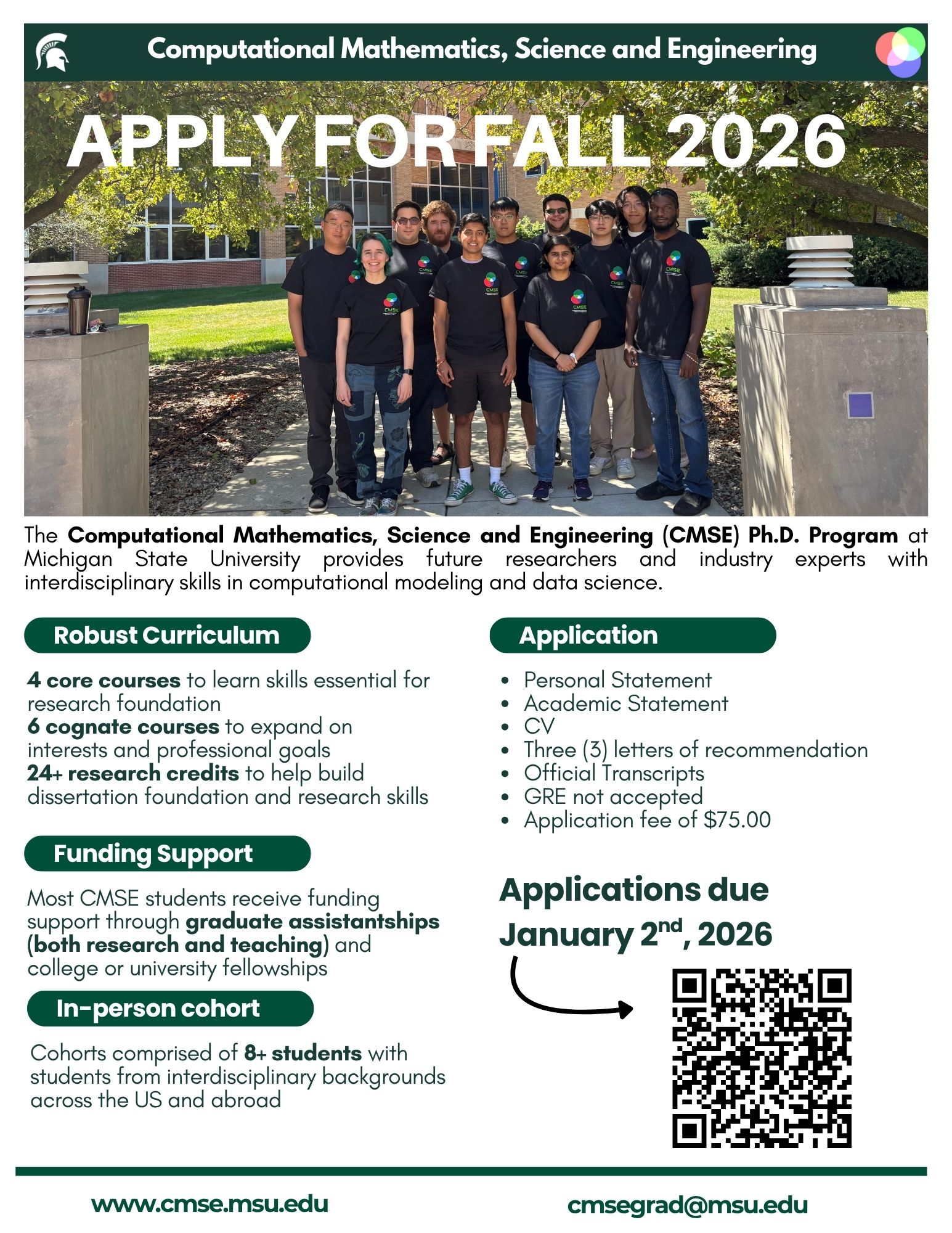Dissertation Defense of CMSE Ziyi Xi
Department of Computational Mathematics, Science & Engineering
Michigan State University
Dissertation Defense Notice
April 9, 2024, 1:00 PM
Zoom link: https://msu.zoom.us/j/96815204867
Passcode: 20240409
Seismic studies of western Pacific subduction zones with high-performance
computing and deep learning
By Ziyi Xi
Abstract:
In this dissertation, I explore seismic phenomena across the Western Pacific subduction zones, employing computational techniques to analyze and interpret complex geophysical data. The study is structured into focused chapters, each contributing to a comprehensive understanding of the seismic velocity structures and the mechanisms driving deep earthquakes in this region.
The dissertation provides an overview of subduction zones, crucial regions where one tectonic plate is forced below another, leading to significant geological phenomena such as earthquakes and volcanic activity. Focusing on the Western Pacific, the dissertation examines the complex interactions at the subduction zones formed by the convergence of the Pacific and Philippine Sea Plates, especially in the northern regions, and the unique geological setting of the Tonga subduction zone and the Lau back-arc basin in the south. These zones are vital for understanding the mechanics of plate tectonics and the resulting seismic activity. Through a detailed examination of the Earth model and seismicity, it sets the groundwork for the dissertation's main scientific inquiries, aiming to unravel the processes governing seismic phenomena in these tectonically active regions using seismic imaging and machine learning techniques.
The dissertation introduces EARA2023, a detailed seismic velocity model of the crust and upper mantle beneath East Asia and the northwestern Pacific. This model, constructed through adjoint full-waveform inversion tomography, is based on waveform data from 142 earthquakes and broadband records from around 2000 stations. EARA2023 offers enhanced images of the subducted oceanic plate, detailing complex slab deformations and providing new perspectives on the origins of notable intraplate volcanoes in East Asia, such as Changbaishan, Datong-Fengzhen, Tengchong, and Hainan.
The dissertation also shifts the focus to the application of machine learning for detecting deep earthquakes, specifically within the Tonga subduction zone. This part of the research outlines the development of a deep-learning-based workflow centered around PhaseNet-TF, a new phase picker designed for the time-frequency domain analysis. This method proves particularly effective for analyzing data from ocean-bottom seismographs (OBSs), improving the detection and picking of P- and S-wave arrivals. The chapter discusses the integration of this technology with an improved Gaussian Mixture Model Associator and the application of a semi-supervised learning approach to refine earthquake catalogs, thereby enhancing our understanding of the seismic activity in the Tonga region.
The dissertation further advances the discussion by examining the use of converted seismic phases, with an emphasis on PS waves from deep earthquakes in the Tonga subduction zone. The dissertation explores the application of PhaseNet-TF to identify PS-converted wave arrivals, alongside direct P and S phases, and details the use of beam-forming and a Markov chain Monte Carlo method for associating detected phases. This approach significantly increases the detection of PS arrivals, contributing to a higher resolution imaging of the subducted slab and offering insights into the structural seismology of the Tonga subduction zone.
Collectively, the dissertation presents a narrative that not only highlights the utility of computational methods in seismic research but also provides a deeper understanding of the mechanisms underlying seismic activity in the Western Pacific. This dissertation contributes to the field of seismology by demonstrating the potential of combining seismic modeling, machine learning, and the analysis of converted seismic phases to investigate subduction zone dynamics and deep earthquake mechanisms.
Committee:
Dr. Songqiao Shawn Wei (Chair)
Dr. Rongrong Wang
Dr. Allen McNamara
Dr. Jeff Freymueller



